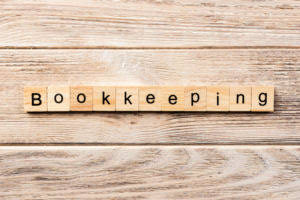Balance Sheet Example Template Format Analysis Explanation
- 16
- Feb
Content

Any amount remaining (or exceeding) is added to (deducted from) retained earnings. Includes non-AP obligations that are due within one year’s time or within one operating accounting equation cycle for the company (whichever is longest). Notes payable may also have a long-term version, which includes notes with a maturity of more than one year.
- Assets include cash and cash equivalents or liquid assets, which may include Treasury bills and certificates of deposit.
- Revenue increases owner’s equity, while owner’s draws and expenses (e.g., rent payments) decrease owner’s equity.
- How assets are supported, or financed, by a corresponding growth in payables, debt liabilities and equity reveals a lot about a company’s financial health.
- Total liabilities is calculated as the sum of all short-term, long-term and other liabilities.
- The image below is an example of a comparative balance sheet of Apple, Inc.
- It will also show the if the company is funding its operations with profits or debt.
- Assets will typically be presented as individual line items, such as the examples above.
Liabilities are presented as line items, subtotaled, and totaled on the balance sheet. Balance sheets are typically prepared and distributed monthly or quarterly depending on the governing laws and company policies. Additionally, the balance sheet may be prepared according to GAAP or IFRS standards based on the region in which the company is located. This account includes the amortized amount of any bonds the company has issued.
If a company has liabilities of $65,000 and equity of $25,000, what are the company’s assets worth?
It can be sold at a later date to raise cash or reserved to repel a hostile takeover. Some liabilities are considered off the balance sheet, meaning they do not appear on the balance sheet. The applications vary slightly from program to program, but all ask for some personal background information. If you are new to HBS Online, you will be required to set up an account before starting an application for the program of your choice. A balance sheet must always balance; therefore, this equation should always be true. Accounts receivable includes all trade receivables, as well as all other types of receivables that should be collected within one year.
Marketable securities includes all securities that are held for trading. Liabilities are also separated into current and long-term categories. After enrolling in a program, you may request a withdrawal with refund (minus a $100 nonrefundable enrollment fee) up until 24 hours after the start of your program. Please review the Program Policies page for more details on refunds and deferrals. Our easy online application is free, and no special documentation is required.
Why Is a Balance Sheet Important?
This is the value of funds that shareholders have invested in the company. When a company is first formed, shareholders will typically put in cash. For example, an investor starts a company and seeds it with $10M. Cash (an asset) rises by $10M, and Share Capital (an equity account) rises by $10M, https://www.bookstime.com/articles/standard-costing balancing out the balance sheet. This account may or may not be lumped together with the above account, Current Debt. While they may seem similar, the current portion of long-term debt is specifically the portion due within this year of a piece of debt that has a maturity of more than one year.
Assets include cash and cash equivalents or liquid assets, which may include Treasury bills and certificates of deposit. Regardless of the size of a company or industry in which it operates, there are many benefits of reading, analyzing, and understanding its balance sheet. Because you make purchases with debt or capital, both sides of the equation must equal. We also allow you to split your payment across 2 separate credit card transactions or send a payment link email to another person on your behalf. If splitting your payment into 2 transactions, a minimum payment of $350 is required for the first transaction.
Liabilities Section
With liabilities, this is obvious—you owe loans to a bank, or repayment of bonds to holders of debt. Liabilities are listed at the top of the balance sheet because, in case of bankruptcy, they are paid back first before any other funds are given out. Although the balance sheet always balances out, the accounting equation can’t tell investors how well a company is performing. If a business buys raw materials and pays in cash, it will result in an increase in the company’s inventory (an asset) while reducing cash capital (another asset). Because there are two or more accounts affected by every transaction carried out by a company, the accounting system is referred to as double-entry accounting. For a company keeping accurate accounts, every business transaction will be represented in at least two of its accounts.
- Essentially, the representation equates all uses of capital (assets) to all sources of capital, where debt capital leads to liabilities and equity capital leads to shareholders’ equity.
- We also allow you to split your payment across 2 separate credit card transactions or send a payment link email to another person on your behalf.
- Accounts receivable includes all trade receivables, as well as all other types of receivables that should be collected within one year.
- The assets should always equal the liabilities and shareholder equity.
- Here is an example of how to prepare the balance sheet from our unadjusted trial balance and financial statements used in the accounting cycle examples for Paul’s Guitar Shop.
- The balance sheet is commonly used for a great deal of financial analysis of a business’ performance.
- intiwid
- Bookkeeping
- Comments Off on Balance Sheet Example Template Format Analysis Explanation
